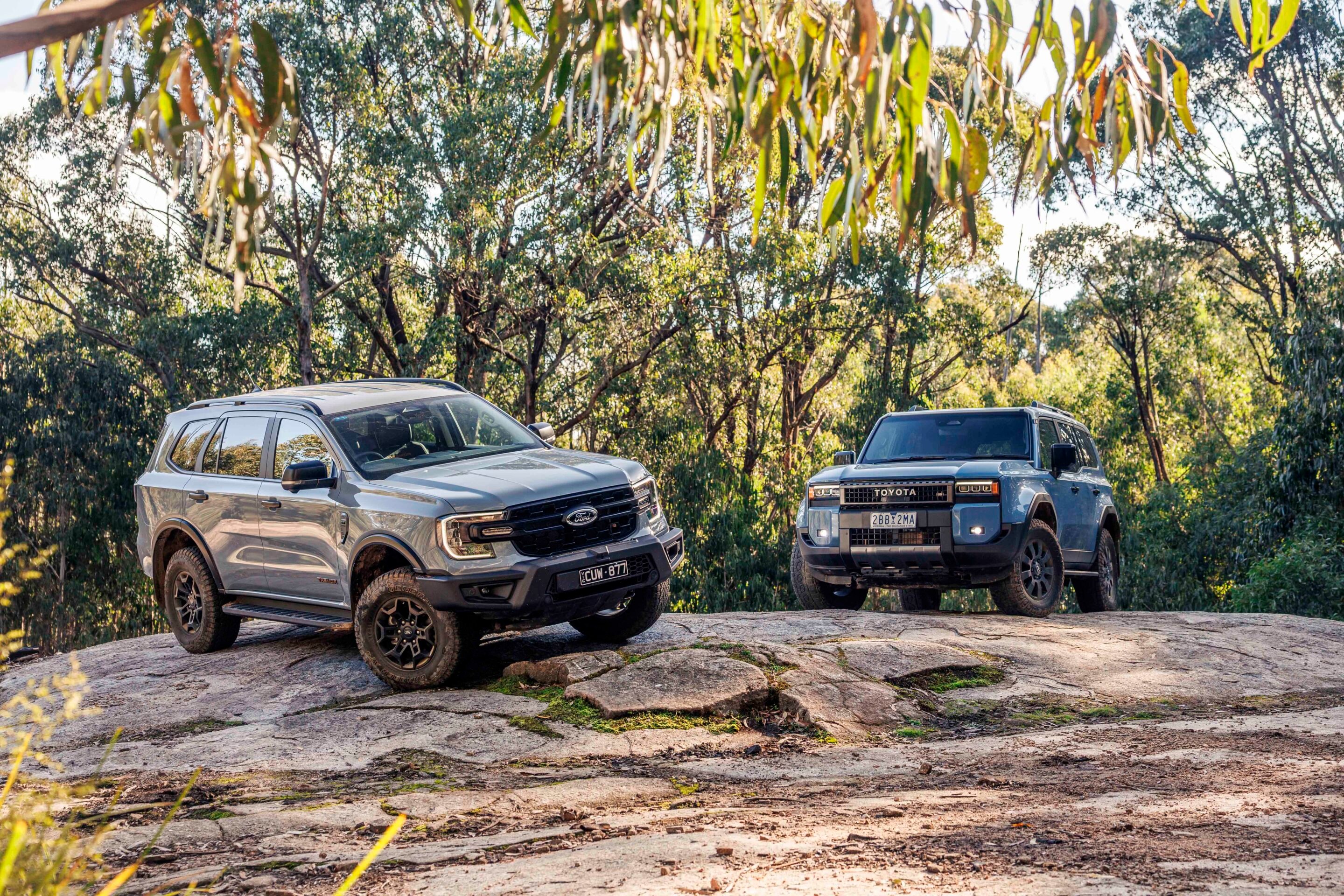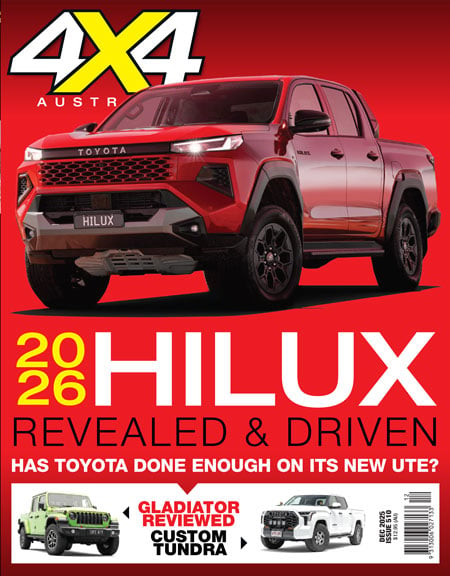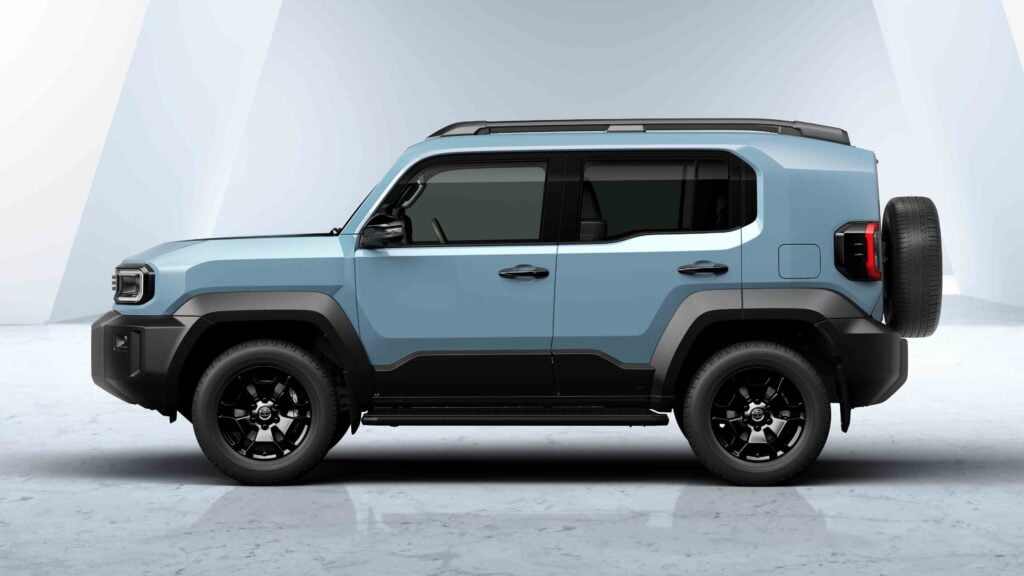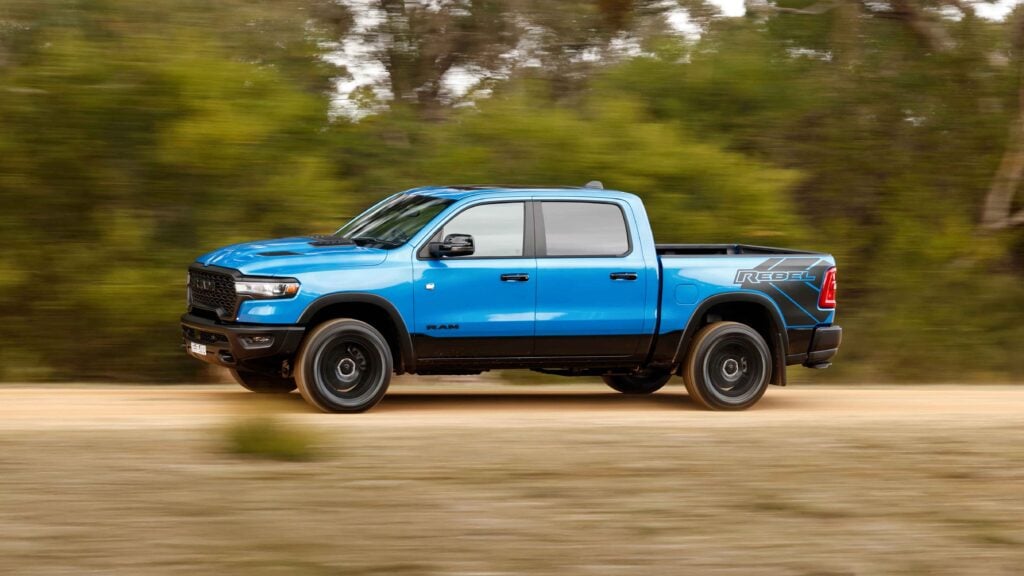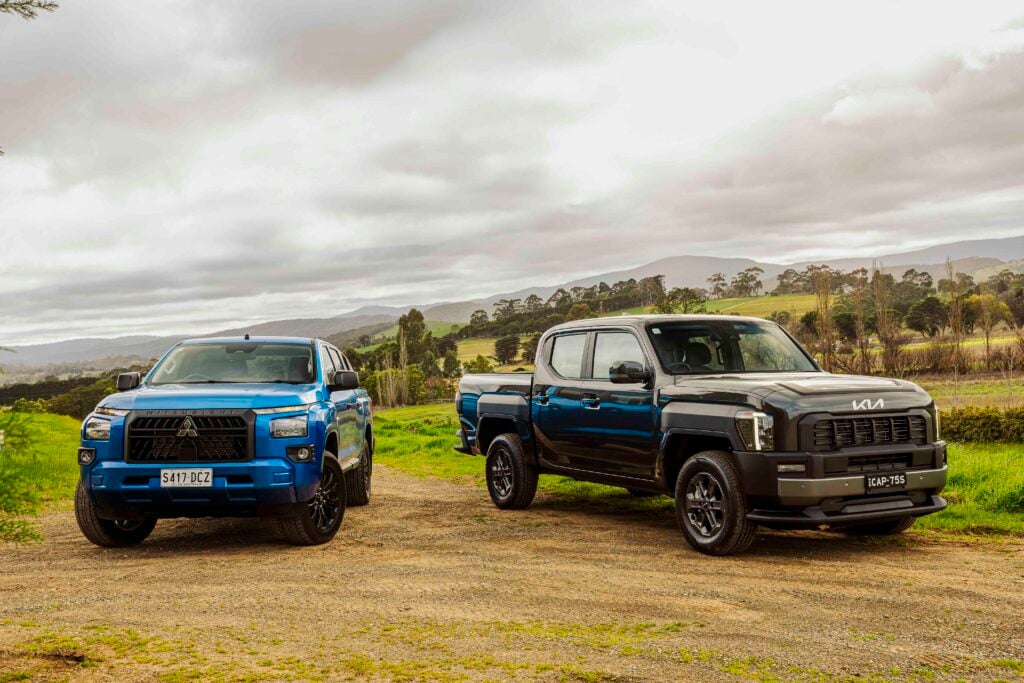These days it seems as though 4×4 wagons play second fiddle to their dual-cab ute siblings when it comes to the purchasing patterns of new-vehicle buyers in Australia.
Utes like the Ford Ranger and Toyota HiLux outsell wagons by a long shot and with the added versatility of a cargo tub on the back and the options that opens up, it’s not hard to see why. For many buyers, though, especially those with growing families, the 4×4 wagons from those same vehicle manufacturers would be much better suited to their needs.
Wagons generally ride better than utes due to their different rear suspension design – they do away with leaf springs at the back in favour of multi-link coil setups – which also helps them to be better off-road vehicles thanks to more rear-axle articulation over rough terrain. The shorter wheelbase of wagons also benefits them off-road thanks to better ramp-over angle.
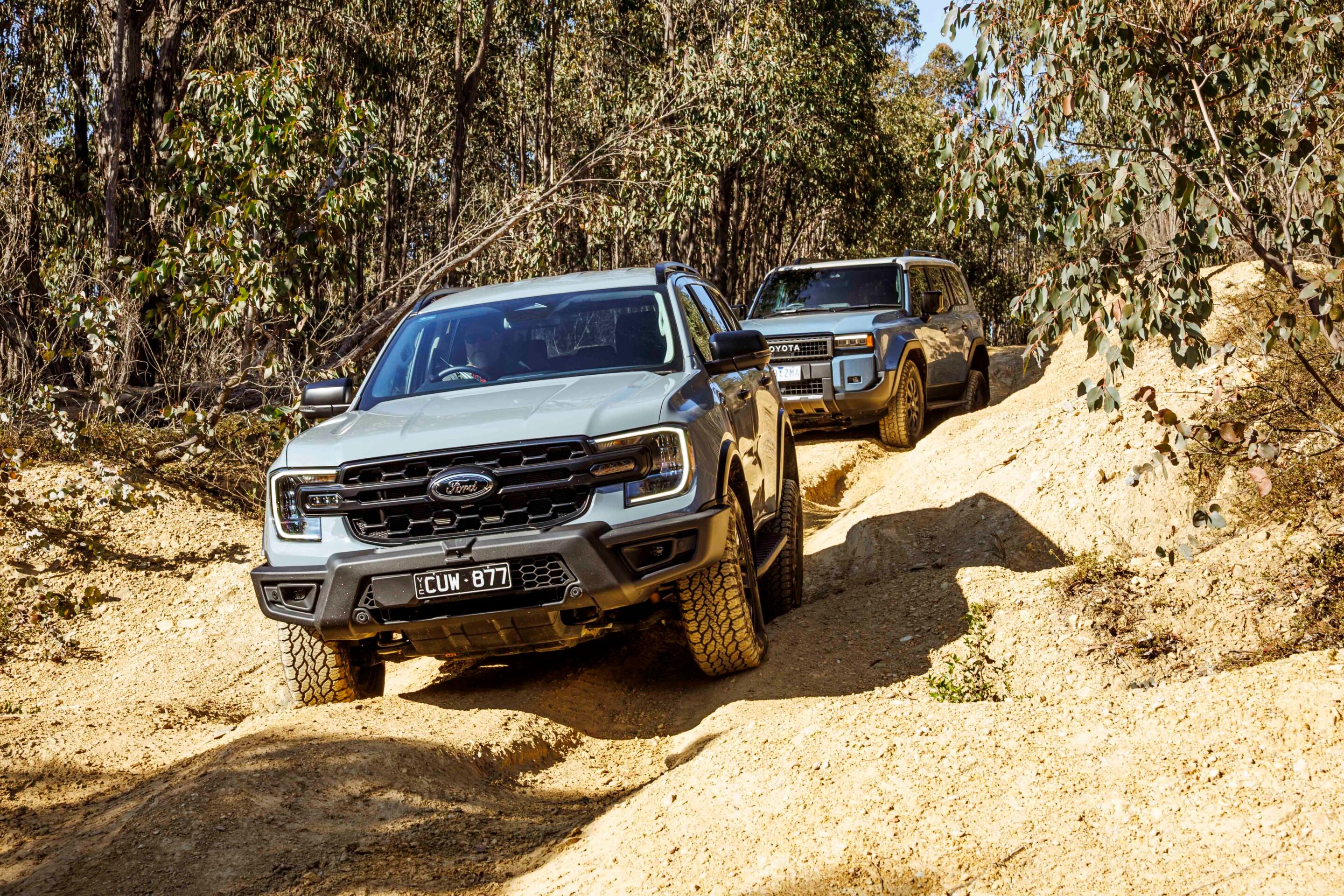
There are even greater advantages inside wagon bodies with more rear-seat legroom and greater rake on rear-seat backrests, resulting in more comfort. This is especially important for those with teenage kids or other taller occupants who won’t find it comfortable being squeezed into the back of a ute on extended journeys.
Most 4×4 wagons also have a third-row seat that can be handy for smaller children on short trips, but these generally eat into the all-important cargo space. Wagons have traditionally been better equipped too, with more safety, luxury and convenience features, although the popularity of utes has seen many of these features now included in the load-luggers.
With the aforementioned pros and cons in mind, and the availability of the new Everest Tremor, we thought it fitting to line this new model from Ford up with the 4×4 Of The Year-winning Toyota Prado Altitude to see how they compare. Manufacturers are cottoning on to the popularity of their wagons and the fact that owners like to use them for off-road adventuring, just what they were made for. Thus the Everest Tremor, like the Prado Altitude, has been specified for the adventurous driver, those who prefer their off-road improvements to come from the factory rather than as aftermarket additions.
The Tremor is configured to be the most off-road focused Everest. It comes after the success of the Ranger Tremor launched last year but, where the Tremor ute was limited to the four-cylinder bi-turbo diesel powertrain, the wagon variant comes exclusively with the V6 diesel engine. And the Ranger Tremor was a limited-edition model whereas the Everest Tremor has been added to the model lineup on a permanent basis.
JUMP AHEAD
- Powertrain and drivetrain comparison
- Suspension and ride quality
- Traction systems, tyres, and locking differentials
- Cabin layout, features and seating practicality
- Pricing and value considerations
- Verdict
- Specs
Powertrain and drivetrain comparison
The Everest powertrain is the superb ‘Lion’ V6 3.0-litre diesel engine backed by a 10-speed automatic and dual range on-demand 4×4 system.
It might be a bit thirsty when compared to its four-cylinder sibling, as well as its competitors, but none can match its sublime torque and smooth delivery all the way through the arc of the go-pedal. The auto transmission is beautifully matched to this engine and having the option of running the transfer case in the Auto setting on wet and/or loose roads is a huge plus in driveability and safety compared to part-time 4×4 systems.
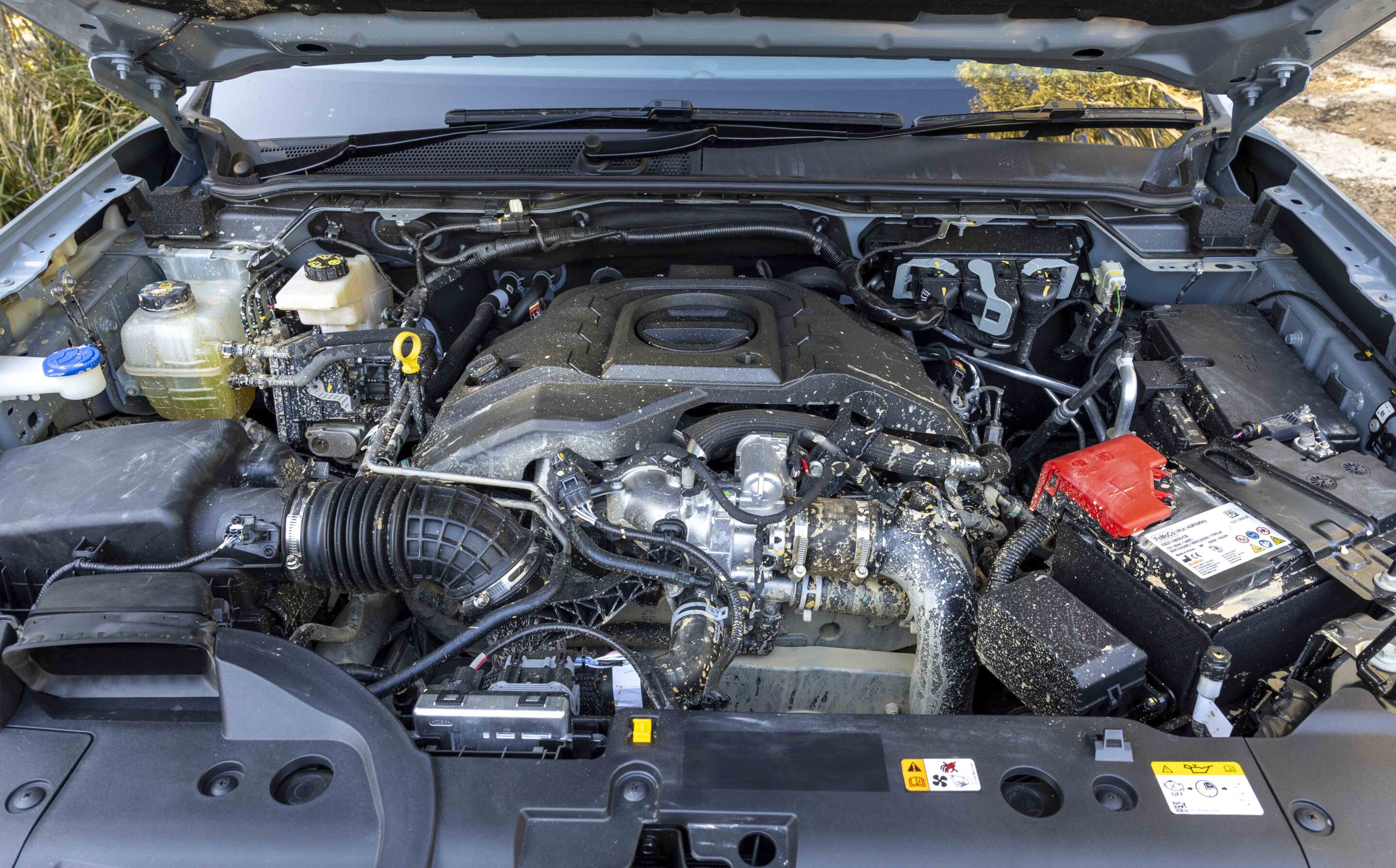
Ford’s 184kW/600Nm Lion V6 has been undergoing a series of rolling updates to its aging base and we feel it is an engine far better suited to these high-spec wagons, even if it is fitted to the cheaper of the two wagons here. It might like a drink, but the way it delivers its molasses-smooth torque is more befitting of a premium off-road rig than Toyota’s four is.
The Prado’s 150kW/500Nm 2.8-litre engine provides plenty of poke for highway and off-road driving but it’s no performance vehicle by any stretch of the imagination. The new eight-speed automatic transmission is quick to kick down and respond to a floored throttle and the engine pulls adequately with that familiar four-pot diesel rumble. While it’s less refined and 100Nm down on Ford’s V6 engine, Toyota’s 2.8 does a respectable job and isn’t left wanting. As to whether it’s up to being in a well-appointed wagon that’s nudging the $100k mark, we’re not convinced. The 250 Series deserves better.
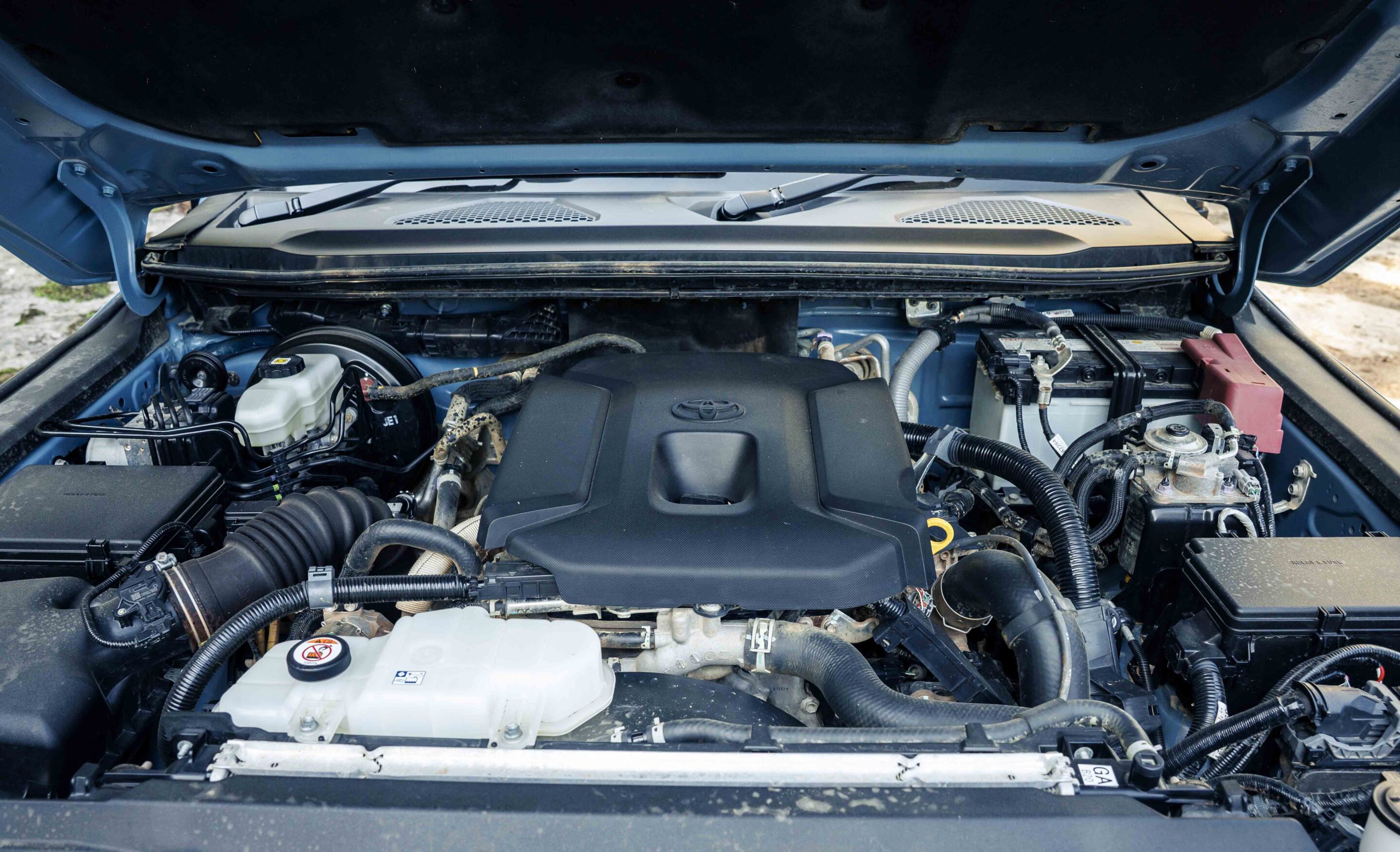
Suspension and ride quality
Like the Ranger Tremor, the Everest Tremor gets bespoke suspension to give it improved off-road capability.
Ford Australia’s engineering team tailored a set of Bilstein position-sensitive monotube gas-filled dampers with remote reservoirs to slot under the higher-riding Everest Tremor with a set of fresh coils that give it a 29mm lift.
As we found in the Ranger Tremor, the Bilstein-bolstered suspension does a superb job of controlling body movement in the Everest Tremor wagon. But this control does come at the expense of a firmer ride that can feel jarring on Victoria’s crook roads. This is no doubt amplified by the stiffer construction of the LT tyre fitted to the Tremor, but the ride quality is far from a deal breaker and the improved body control and handling poise outweigh any negativity. Ford generally tunes its suspension and chassis packages to be firmer and more taut than Toyota’s softer suspension calibration, giving the Everest more precise and confident handling when driving on road.

Toyota has taken a different path in equipping the Altitude’s chassis for improved off-road performance. The suspension configuration remains the soft and supple all-coil arrangement with the standard shock absorbers, but a front swaybar disconnect function is added to increase the wheel travel on the front end by around 10 per cent. The sway bar automatically reconnects when road speeds reach 30km/h.
The soft, compliant multilink rear suspension of the Toyota gives the rear axle plenty of articulation which has always been a Toyota hallmark. The tauter Ford suspension picks up wheels sooner and relies more on its ETC and the RDL to get it through uneven terrain.
| Toyota Prado Altitude | Ford Everest Tremor | |
|---|---|---|
| Approach angle | 32 | 32.0 |
| Rampover angle | 25 | 26.8 |
| Departure angle | 17 | 23 |
| Ground clearance | 221mm | 255mm |
| Wading depth | 700mm | 800mm |
Traction systems, tyres and locking differentials
With their traction aid systems employed, both of these wagons cruised across our deep opposing holes.
The Prado again demonstrated Toyota’s leading electronic traction control calibration which almost negates the need for locking diffs in such terrain. The Altitude is the only variant in the 250 Series Prado range that comes with a driver selectable rear diff lock (RDL), while all 4×4 Everests have one fitted as standard. Neither manufacturer offers a locking front diff on their wagons but they are available through the aftermarket.
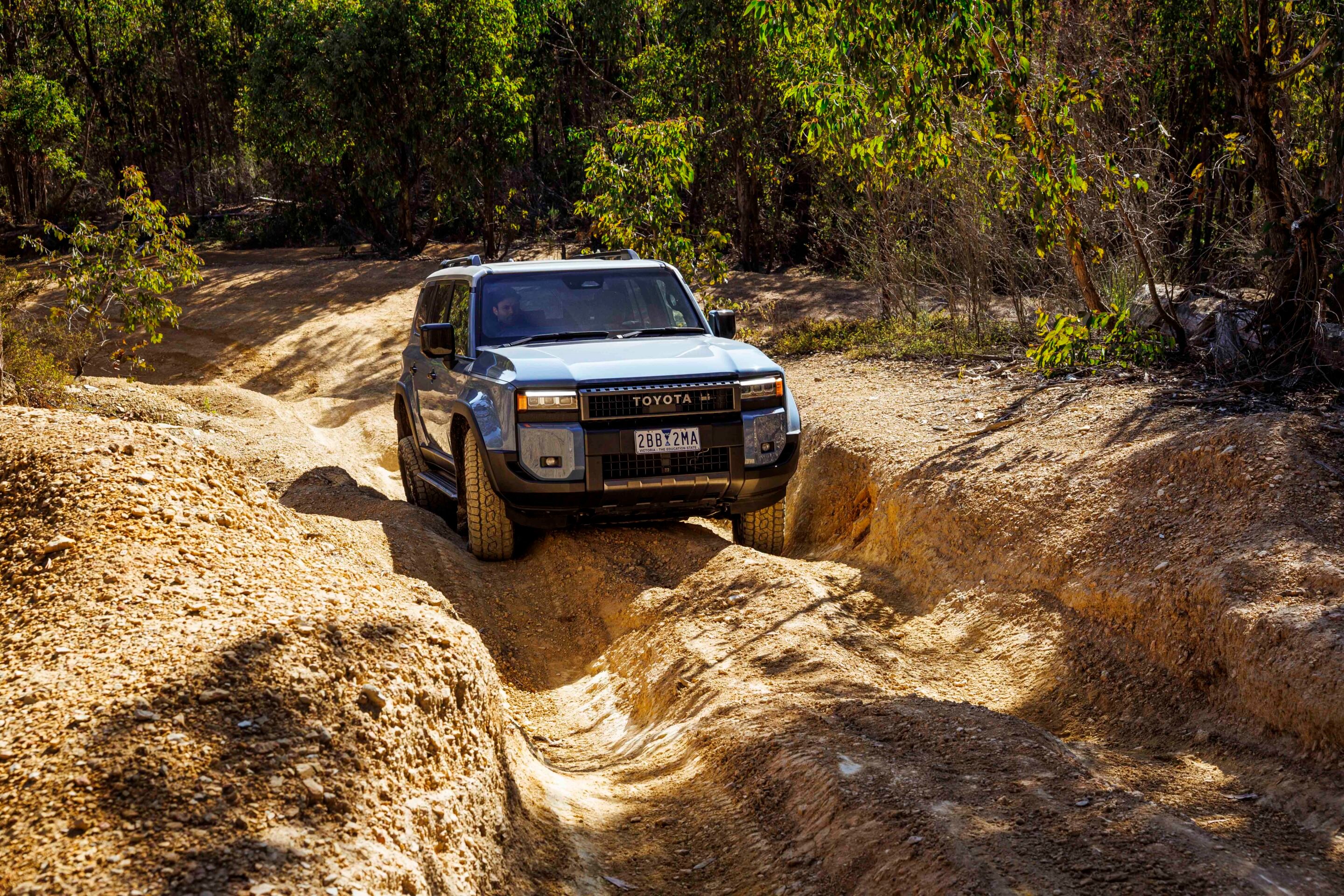
While both of these off-road ready wagons ride on 18-inch wheels and tyres, the Ford’s all-terrain rubber is ready for action while Toyota owners will be looking to replace the Toyo all-terrains on their Altitude as they are relatively mild as far as off-road rubber goes. The Altitude gets a model-specific grille with ‘TOYOTA’ spelt out across it, black wheel arch mouldings, and it is available in a range of grade-specific colours including a couple of heritage tones that can be paired with a white roof.
The Everest really benefits from the extra ground clearance and all terrain tyres included with the Tremor package, and this makes up for many of the things we criticised the Everest Sport for on our 4X4OTY test. The quicker-acting Rock Crawl drive mode also helps the Tremor’s performance when driving off road. The Everest’s stiffer suspension lifts wheels sooner and its ETC is slower to react, relying more on the rear diff lock than the Prado does.
Cabin layout, features and seating practicality
As the higher specification models in their respective ranges, both the Altitude and the Tremor come very well equipped, indicative of their high price points.
Inside the Prado Altitude you’ll find a 12.3-inch multimedia screen compatible with wireless Apple CarPlay and Android Auto; Bluetooth; wireless charger; cloud-based inbuilt sat-nav; panoramic moonroof; and leather-accented seat trim with eight-way power adjustment and power lumbar support and memory for the driver, and four-way power adjustment for the passenger.
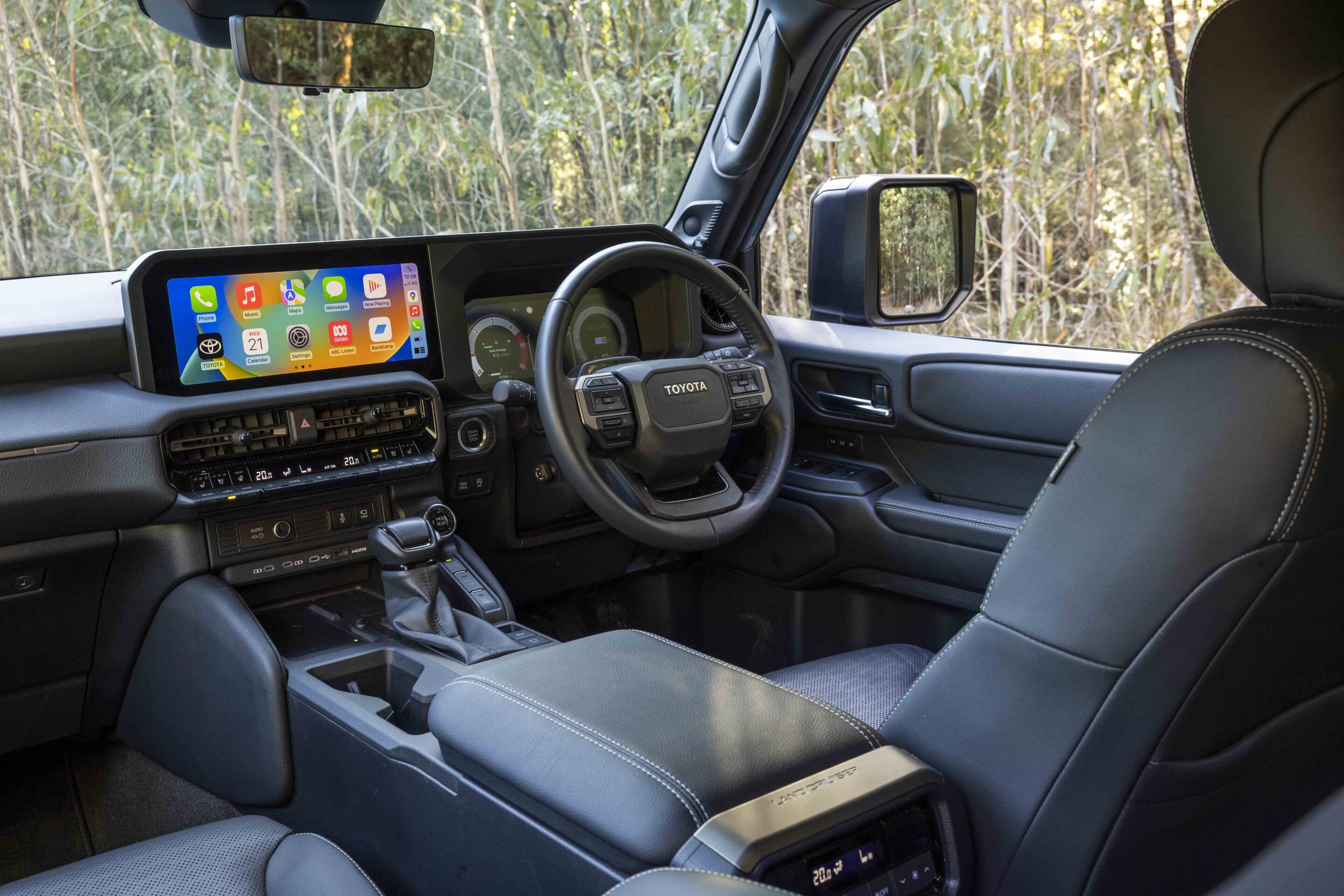
There’s also a 12.3-inch digital instrument cluster; a refrigerated centre console; power-adjustable steering column; and a JBL sound system with 14 speakers. The cabin is tall, spacious and comfortable for front and second-row passengers, with rear-seat ventilation and multiple charging points including a 220V AC outlet.
Toyota dropped the ball when designing the rear of the 250 Series Prado and the seven-seat models are heavily compromised in the cargo area because of the 48-volt mild hybrid system. Thankfully the Altitude forgoes the third-row seat, leaving the back for cargo storage. There’s a small floor lip where the hybrid battery sits, but the aftermarket is already addressing that with custom drawers and storage systems.
The Everest Tremor, by contrast, retains its seven-seat layout, with the third row folding flat into the floor when not in use, without compromising cargo space. While the cabin isn’t as tall as the Prado’s and feels slightly smaller, it is still wide and comfortable. Leather-accented seats feature ‘Tremor’ stitching, and the $1100 premium seat upgrade on the test car added heating, ventilation, and power adjustment to the front seats. The 12-inch vertical screen is easy to use, with manual controls for climate and volume. It includes wireless Apple CarPlay and Android Auto mirroring, a wireless phone charger, an inverter, and a 220V AC outlet.
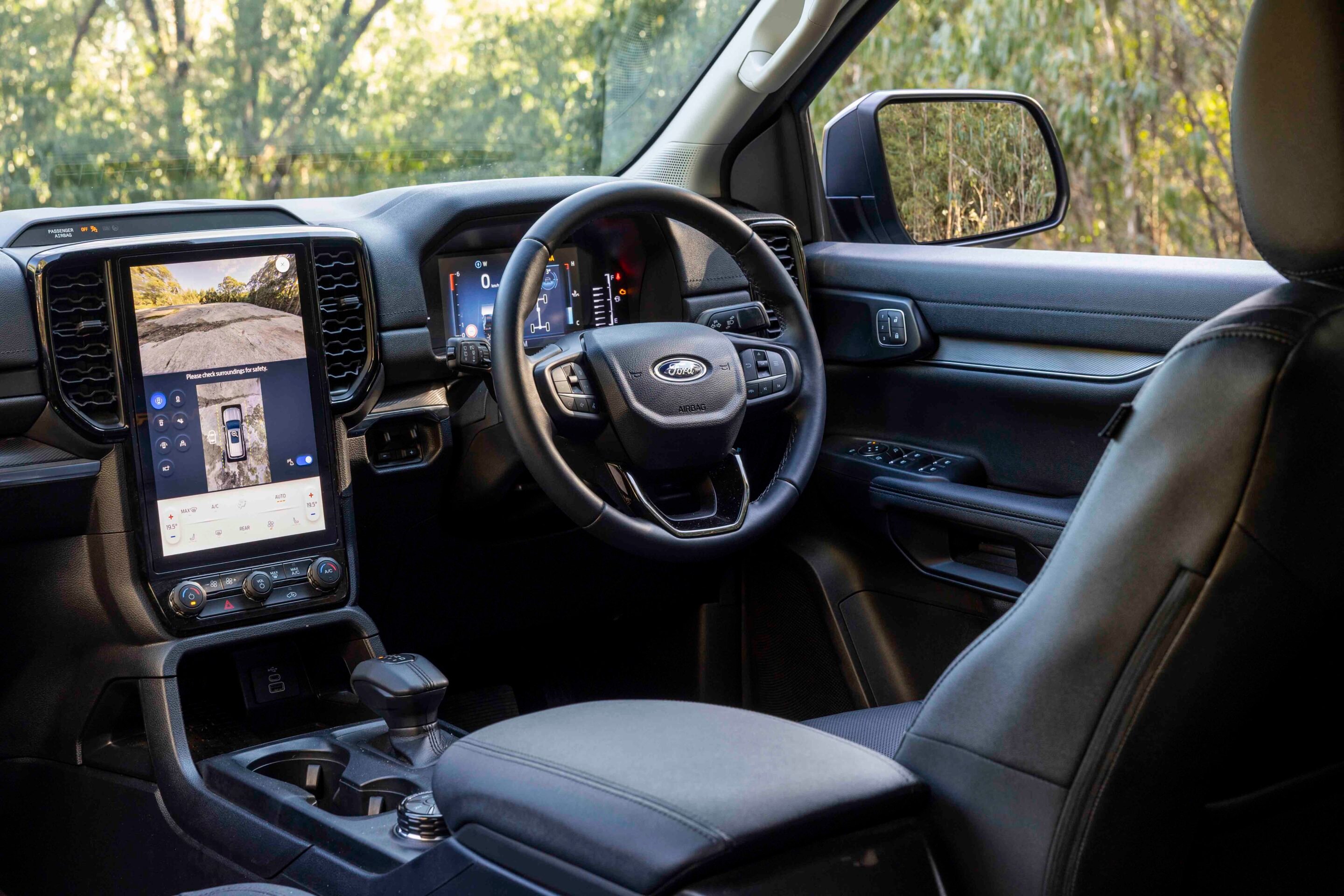
Another unique Tremor feature is the Rock Crawl drive mode that sharpens the ETC and centre diff clutch for quicker traction response off-road. The Touring Pack option adds a 360° camera system, integrated trailer brake controller, tow bar and hitch, and Pro Trailer backup system. Externally, the Tremor features a bespoke grille with driving lights tucked behind it, black wheel arch flares, and is available only in four shades of grey (with a $700 paint option).
Pricing and value considerations
The Everest Tremor’s package, including ground clearance and tyres, plus the optional Rough Terrain Pack and Touring Pack, add around $7800 in extras, eating into its roughly $15,000 price advantage over the Prado Altitude. The Prado is priced higher but offers a more economical engine, a larger cabin, and a bigger fuel tank.
Verdict
Choosing the right off-road wagon from this pair will come down to a few key differences in how the relative manufacturers offer them and how each fits in with your budget and intended use.
The big one is the circa-$15k price difference between the two, as it could be a deal breaker for potential Prado buyers. As mentioned, the money saved by choosing the Tremor could equip your wagon with a lot of accessories and/or pay for an extended outback family holiday. Another positive for the Ford in the eyes of some is that it retains its seven seats, and when folded away and the vehicle is used as a five-seater, those seats don’t eat into the cargo space. Then there’s that syrupy V6 diesel engine that is unrivalled in this sub-$100k class of 4×4.
In the Altitude’s favour are its strong off-road performance, larger cabin, more economical engine and bigger fuel tank. But are these features worth that extra money? Whichever of these two vehicles you choose, you’ll end up with a wagon that’s up to the challenges of adventurous Aussie four-wheel drivers.
Ford Everest Tremor: 8.5/10
Toyota Prado Altitude: 8.5/10
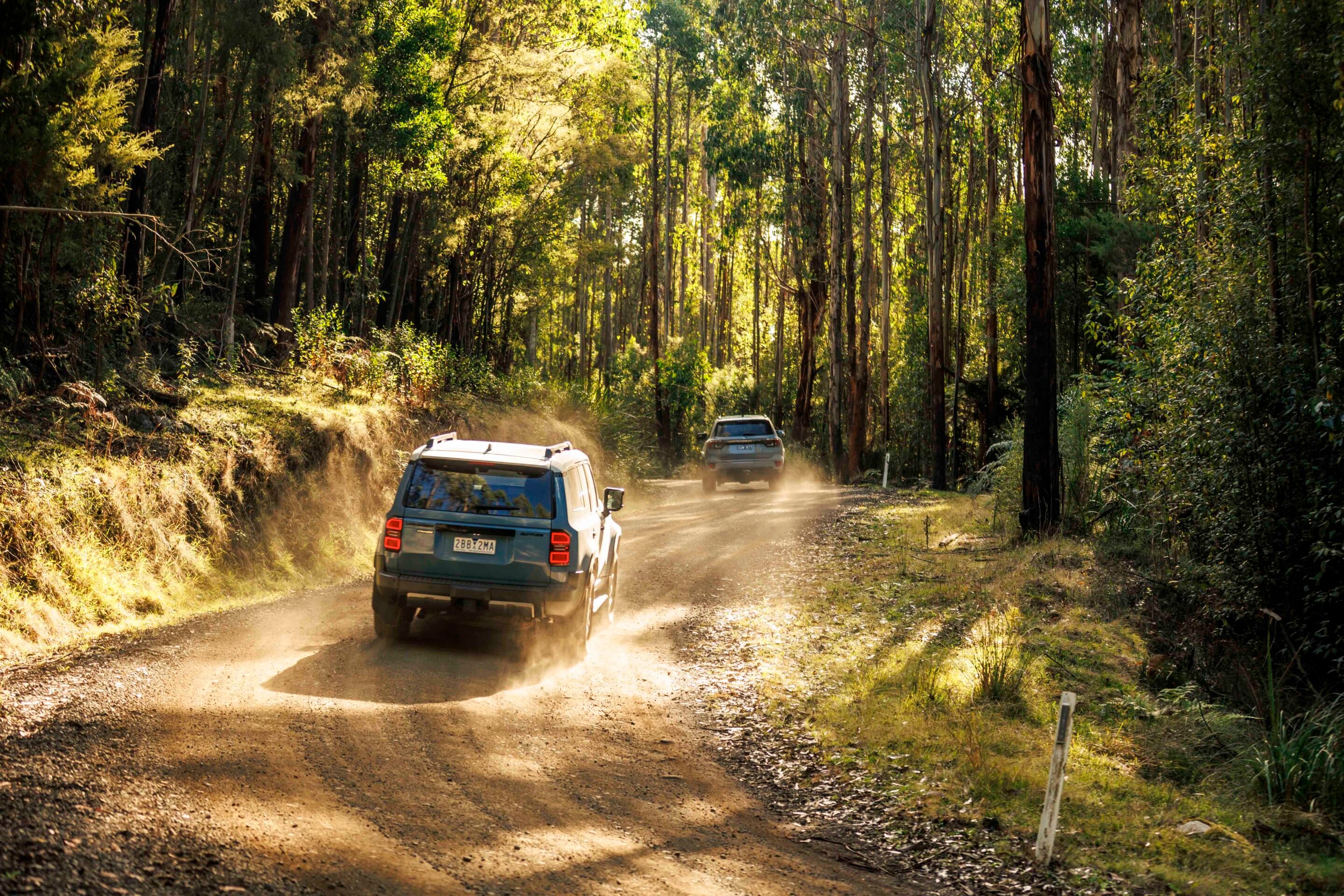
Specs
| Toyota Prado Altitude | Ford Everest Tremor | |
|---|---|---|
| Price | $92,700 +ORC | $76,590 +ORC |
| Engine | 4-cyl turbo diesel | V6 diesel |
| Capacity | 2755cc | 2993cc |
| Max power | 150kW@ 3000-3400rpm | 184kW @ 3750rpm |
| Max torque | 500NM@ 1600-2800rpm | 600Nm @ 1750-2250rpm |
| Transmission | 8-speed automatic | 10-speed automatic |
| 4×4 system | Full-time, dual range. Lockable centre & rear diffs | 2wd, 4×4 auto, 4×4 high range, 4×4 low range, RDL |
| Construction | 5-door wagon on a ladder frame chassis | 5-door wagon on a ladder frame chassis |
| Front suspension | IFS with double wishbones and coil springs | IFS with double wishbones and coil springs |
| Rear suspension | Live axle, coil springs, multi-links, Panhard rod | Live axle, coil springs, multi-links, Watts linkage |
| Tyres | 265/65R18 on alloys | LT265/70R17 on alloys |
| Kerb weight | 2595kg | 2550kg |
| GVM | 3200kg | 3240kg |
| GCM | 6600kg | 6350kg |
| Towing capacity | 3500kg | 3500kg |
| Payload | 605kg | 690kg |
| Seats | 5 | 7 |
| Fuel tank | 110L – 17.4L Adblue | 80L -17L Adblue |
| ADR fuel consumption | 7.6L/100km | 8.5L/100km |
We recommend
-
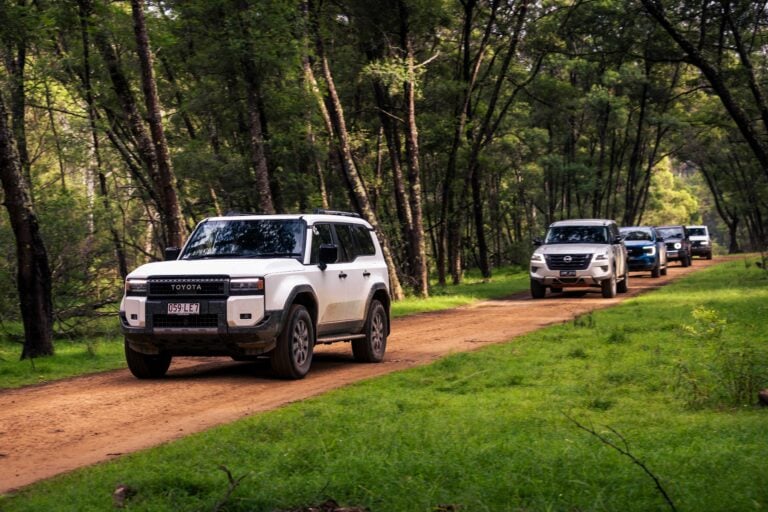 4x4 Comparisons
4x4 ComparisonsNissan Patrol Warrior versus Toyota Prado Altitude
Two off-road big dogs go head-to-head
-
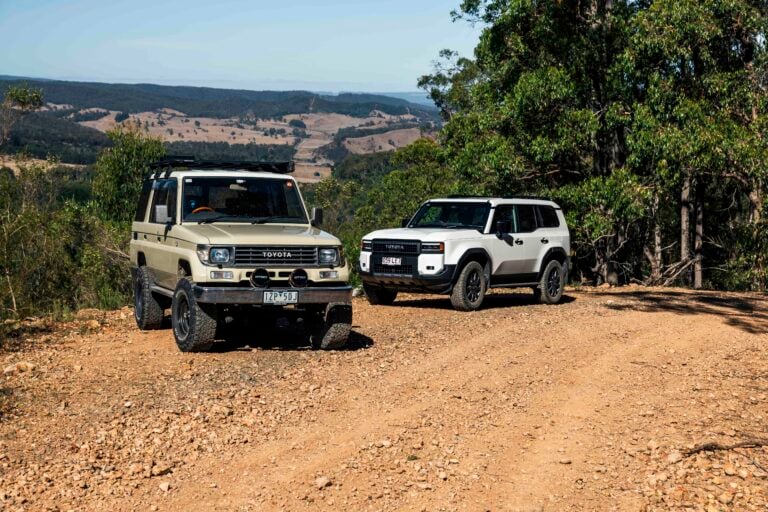 4x4 Comparisons
4x4 ComparisonsToyota Prado showdown: Old versus new!
Never sold in Australia, the 70 Series Prado turns heads off-road. With a 250 Series on hand, we couldn’t resist a comparison
-
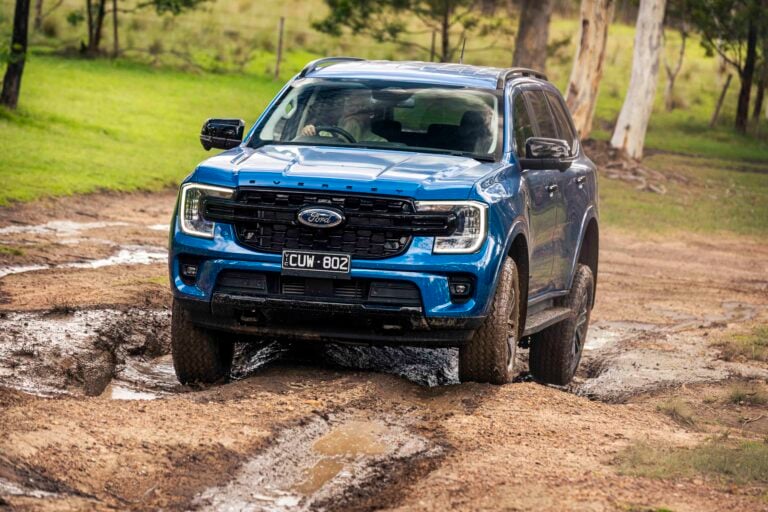 Reviews
ReviewsBetter than a Ranger? 2025 Ford Everest Sport 3.0L V6 review
The Everest is better on-road than the Ranger, so why aren’t more people buying it?


